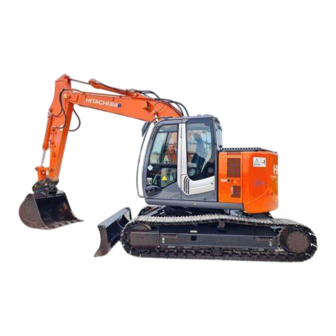
Table of Contents
Advertisement
Quick Links
Hitachi Construction Machinery Co., Ltd.
URL:http://www.hitachi-c-m.com
This book is printed on recycled paper.
PRINTED IN JAPAN (K) 2013, 09
PART NO.
EM1U4-2-6
Operator's Manual
135US
135US-
• 135USK-
3
3
225US
225US-
• 225USLC-
3
3
225USR
225USR-
• 225USRLC-
3
Hydraulic Excavator
Serial No.
ZX135US
class
080003 and up
-3
ZX225US
class
200001 and up
-3
ZX225USR
class
200001 and up
-3
-3 class
• 135USL-
3
-3 class
-3 class
• 225USRK-
• 225USRLCK-
3
3
3
Advertisement
Table of Contents














Need help?
Do you have a question about the ZX225US-3 and is the answer not in the manual?
Questions and answers